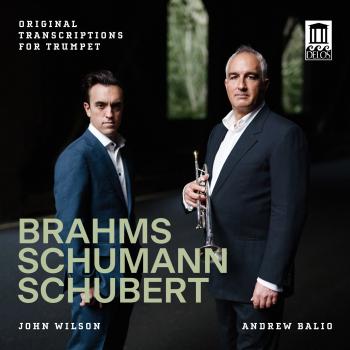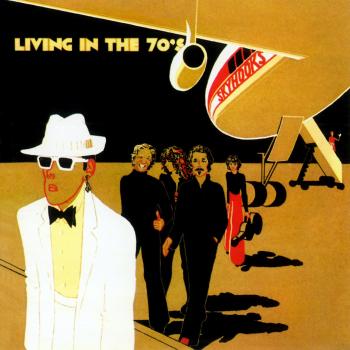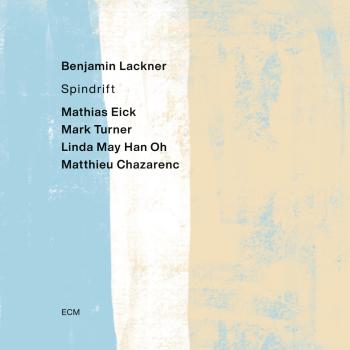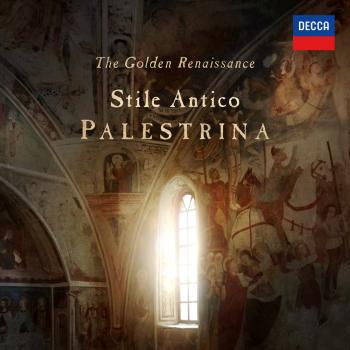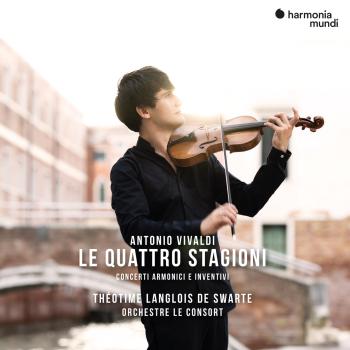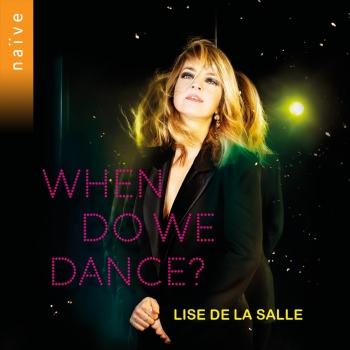
When Do We Dance? Lise de la Salle
Album info
Album-Release:
2021
HRA-Release:
04.06.2021
Label: Naïve, a Label of Believe Group
Genre: Instrumental
Subgenre: Piano
Artist: Lise de la Salle
Composer: George Gershwin (1898-1937), Art Tatum (1909-1956), William Bolcom (1938), Fats Waller (1904-1943), Astor Piazzolla (1921-1992), Alberto Ginastera (1916-1983), Manuel de Falla (1876-1946), Maurice Ravel (1875-1937), Camille Saint-Saens (1835-1921), Bela Bartok (1881-1945), Igor Strawinsky (1882-1971), Alexander Scriabin (1872-1915)
Album including Album cover Booklet (PDF)
I`m sorry!
Dear HIGHRESAUDIO Visitor,
due to territorial constraints and also different releases dates in each country you currently can`t purchase this album. We are updating our release dates twice a week. So, please feel free to check from time-to-time, if the album is available for your country.
We suggest, that you bookmark the album and use our Short List function.
Thank you for your understanding and patience.
Yours sincerely, HIGHRESAUDIO
- George Gershwin (1898 - 1937):
- 1 Gershwin: When Do We Dance? 03:07
- Art Tatum (1909 - 1956):
- 2 Tatum: Tea for Two 03:40
- William Bolcom (b. 1938):
- 3 Bolcom: Three Ghosts Rags: No. 1, Graceful Ghost Rag 05:03
- Fats Waller (1904 - 1943):
- 4 Waller: Vipers Drag 03:54
- Astor Piazzolla (1921 - 1992):
- 5 Piazzolla: Libertango 03:34
- Alberto Ginastera (1916 - 1983): Danzas argentinas, Op. 2:
- 6 Ginastera: Danzas argentinas, Op. 2: No. 1, Danza del viejo boyero 01:22
- 7 Ginastera: Danzas argentinas, Op. 2: No. 2, Danza de la moza donosa 04:21
- 8 Ginastera: Danzas argentinas, Op. 2: No. 3, Danza del gaucho matrero 03:09
- Manuel de Falla (1876 - 1946):
- 9 Falla: El amor brujo: No. 8, Danza ritual del fuego 03:57
- Maurice Ravel (1875 - 1937): Valses nobles et sentimentales, M. 61:
- 10 Ravel: Valses nobles et sentimentales, M. 61: No. 1, Modéré, très franc 01:28
- 11 Ravel: Valses nobles et sentimentales, M. 61: No. 2, Assez lent, avec une expression intense 02:55
- 12 Ravel: Valses nobles et sentimentales, M. 61: No. 3, Modéré 01:21
- 13 Ravel: Valses nobles et sentimentales, M. 61: No. 4, Assez animé 01:19
- 14 Ravel: Valses nobles et sentimentales, M. 61: No. 5, Presque lent, dans un sentiment intime 01:48
- 15 Ravel: Valses nobles et sentimentales, M. 61: No. 6, Vif 00:48
- 16 Ravel: Valses nobles et sentimentales, M. 61: No. 7, Moins vif 03:31
- 17 Ravel: Valses nobles et sentimentales, M. 61: No. 8, Épilogue. Lent 05:26
- Camille Saint-Saëns (1835 - 1921):
- 18 Saint-Saëns: Six Etudes, Op. 52: No. 6, Etude en forme de valse 07:59
- Claude Debussy (1862 - 1918):
- 19 Debussy: Mazurka, L. 67 02:59
- Béla Bartók (1881 - 1945): Romanian Folk Dances, Sz. 56:
- 20 Bartók: Romanian Folk Dances, Sz. 56: No. 1, Stick Dance. Allegro moderato 01:26
- 21 Bartók: Romanian Folk Dances, Sz. 56: No. 2, Sash Dance. Allegro 00:29
- 22 Bartók: Romanian Folk Dances, Sz. 56: No. 3, In One Spot. Andante 00:51
- 23 Bartók: Romanian Folk Dances, Sz. 56: No. 4, Dance from Bucsum. Moderato 00:34
- 24 Bartók: Romanian Folk Dances, Sz. 56: No. 5, Romanian Polka. Allegro 00:31
- 25 Bartók: Romanian Folk Dances, Sz. 56: No. 6, Fast Dance. Allegro 01:04
- Igor Stravinsky (1882 - 1971):
- 26 Stravinsky: Tango 03:12
- Alexander Scriabin (1872 - 1915):
- 27 Scriabin: Waltz in A-Flat Major, Op. 38 07:25
- Sergei Rachmaninoff (1873 - 1943):
- 28 Rachmaninoff: Polka italienne in E-Flat Major, TN ii/21 04:16
Info for When Do We Dance?
Vier Jahre nach ihrem grenzüberschreitenden Album Bach Unlimited präsentiert die Pianistin LISE DE LA SALLE eine sehr persönliche musikalische Odyssee, die von ihrer Liebe zum Tanz und ihrer Faszination für die Zeit von 1850 bis 1950 inspiriert ist.
LISE DE LA SALLE’s »When do we dance?« ist mehr als nur eine Frage. Es ist eine Einladung zu einer Reise, »die die verschiedenen Arten untersucht, wie der Tanz den Körper in Besitz nimmt«. Eine Zeitreise durch ein ganzes Jahrhundert (1850–1950), mit dem Akzent auf Modernität; eine Reise über die Ozeane von Nordamerika nach Osteuropa, kreuz und quer durch Argentinien, Spanien, Frankreich, Ungarn und Russland; eine Reise in den Kern des Rhythmus, diesem wesentlichen Ankerpunkt für den Tanz wie für die Musik im Allgemeinen. So erleben wir Werke von Gershwin und Piazzolla, Ravel und Rachmaninoff, ebenso Bartóks Volkstänze und einen Tango von Strawinsky. Für LISE DE LA SALLE ist Tanz ein Vergnügen, das man mit anderen teilt, und gern lässt sie uns hieran teilhaben.
Lise de la Salle, Klavier
Lise de la Salle
In just a few years, through her international concert appearances and her award-winning Naïve recordings, 29 year-old Lise de la Salle has established a reputation as one of today’s most exciting young artists and as a musician of uncommon sensibility and maturity. Her playing inspired a Washington Post critic to write, “For much of the concert, the audience had to remember to breathe… the exhilaration didn’t let up for a second until her hands came off the keyboard.”
A native of France, Ms. de la Salle first came to international attention in 2005, at the age of 16, with a Bach/Liszt recording that Gramophone Magazine selected as “Recording of the Month.” Ms. de la Salle, who records for the Naïve label, was then similarly recognized in 2008 for her recording of the first concertos of Liszt, Prokofiev and Shostakovich – a remarkable feat for someone only 20 years old. Recent recordings offered works of Schumann and the Complete Works of Rachmaninoff for Piano and Orchestra with Fabio Luisi and the Philharmonia Zurich. The 2017-2018 season will see the release of a Bach-focused disc on Naïve including the Italian Concerto, the Liszt Fantasy & Fugue on the Theme B.A.C.H. and the Bach/Busoni Chaconne.
Lise de la Salle has played with many of the world’s leading orchestras and conductors. She made her London Symphony Orchestra debut with Fabio Luisi and in 2016 returned to the orchestra with Antonio Pappano. Luisi, who invited her to become the first Artist-in-Residence of the Zurich Opera in 2014, has also frequently featured Ms. de la Salle with the Vienna Symphony, including a performance in New York on the Great Performers Series at Lincoln Center. In the U.S., Ms. de la Salle has played with the Boston Symphony, Chicago Symphony at the Ravinia Festival, San Francisco Symphony, and four times with the Los Angeles Philharmonic, among others. In her second appearance with the Minnesota Orchestra, she played the Gershwin Concerto in F, a performance that inspired one critic to exclaim, “she might just be the most exciting young artist in classical music right now.”
Following triumphs in 2016-17 with Conlon and the National Symphony, Morlot and the Minnesota Orchestra, and stepping in for André Watts with the Philadelphia Orchestra and Luisi, Ms. de la Salle’s coming seasons include appearances with the Atlanta, Austin, Dallas, Detroit, Ft. Worth, Quebec, and Rogue Valley Symphonies. She will be heard in recital in Chicago, Montreal, New Orleans, New York and Washington, DC, and will also be a guest artist with the Chamber Music Society of Lincoln Center.
In recent seasons, Ms. de la Salle was heard with leading symphonic ensembles in London, Paris, Munich, Tokyo, Baltimore, Detroit and Quebec, among others, with such esteemed conductors as Osmo Vanska and Douglas Boyd. Concertos of Mozart, Beethoven, Brahms, Ravel, and Rachmaninoff demonstrated her fresh interpretations, compelling musicality, and dynamic pianism. A sought-after recitalist, she made her debut in the Chicago Symphony recital series. She has also captivated enthusiastic audiences and critics in major series in New York, Boston, Washington, D.C., San Francisco, Montreal, Toronto, and at the Philharmonie in Berlin, Wigmore Hall in London, the Louvre in Paris, and colleges and universities around the country.
Ms. de la Salle also takes pleasure in educational outreach and conducts master classes in many of the cities in which she performs.
Her critically acclaimed Naïve CDs include an all-Chopin disc with a live recording of the Piano Concerto 2, Op. 21 with Fabio Luisi conducting the Staatskapelle Dresden, and the Four Ballades. In May 2011, Naïve issued her sixth recording, released in celebration of Liszt’s Bicentennial. The recording includes both original Liszt compositions, such as the Ballade No. 2 in b minor, Funerailles, and the Dante Sonata, as well as Liszt’s transcriptions of others’ pieces, such as Mozart’s Lacrymosa and Schubert’s Ständchen. Diapason Magazine named the album the “Diapason D’or,” and it was the “Editor’s Choice” in Gramophone Magazine, which stated that “…the wonderfully gifted 23-year-old Lise de la Salle gives us a Liszt recital of astonishing strength, poetry, and, for one so young, musical maturity.”
Born in Cherbourg, France in 1988, Ms. de la Salle was surrounded by music from her earliest childhood. She began studying the piano at the age of four and gave her first concert at nine in a live broadcast on Radio-France. When she was eleven, Ms. de la Salle received special permission to enter the Paris Conservatoire Supérieur de Musique to study with Pierre Réach. At 13, she made her concerto debut with Beethoven’s Piano Concerto No. 2 in Avignon, and her Paris recital debut at the Louvre before going on tour with the Orchestre National d’Ile de France playing Haydn’s Concerto in D Major. Ms. de la Salle graduated in 2001 and subsequently enrolled in the postgraduate cycle with Bruno Rigutto. Since 1997, she has worked closely with Pascal Nemirovski and studied with Genevieve Joy-Dutilleux.
In 2003, Ms. de la Salle won the European Young Concert Artists Auditions in Paris, and in 2004 she won the Young Concert Artists International Auditions in New York. Later that year, the organization presented both her New York and Washington, D.C. debuts. At the Ettlingen International Competition in Germany, Ms. de la Salle won First Prize and the Bärenreiter Award. She has also won First Prize in many French piano competitions, including the Steinway, Sucy, Vulaines, and Radio-France Competitions. In 2003, she won the “Groupe Banque Populaire Natexis” Prize, for which she received a three-year scholarship.
Booklet for When Do We Dance?

